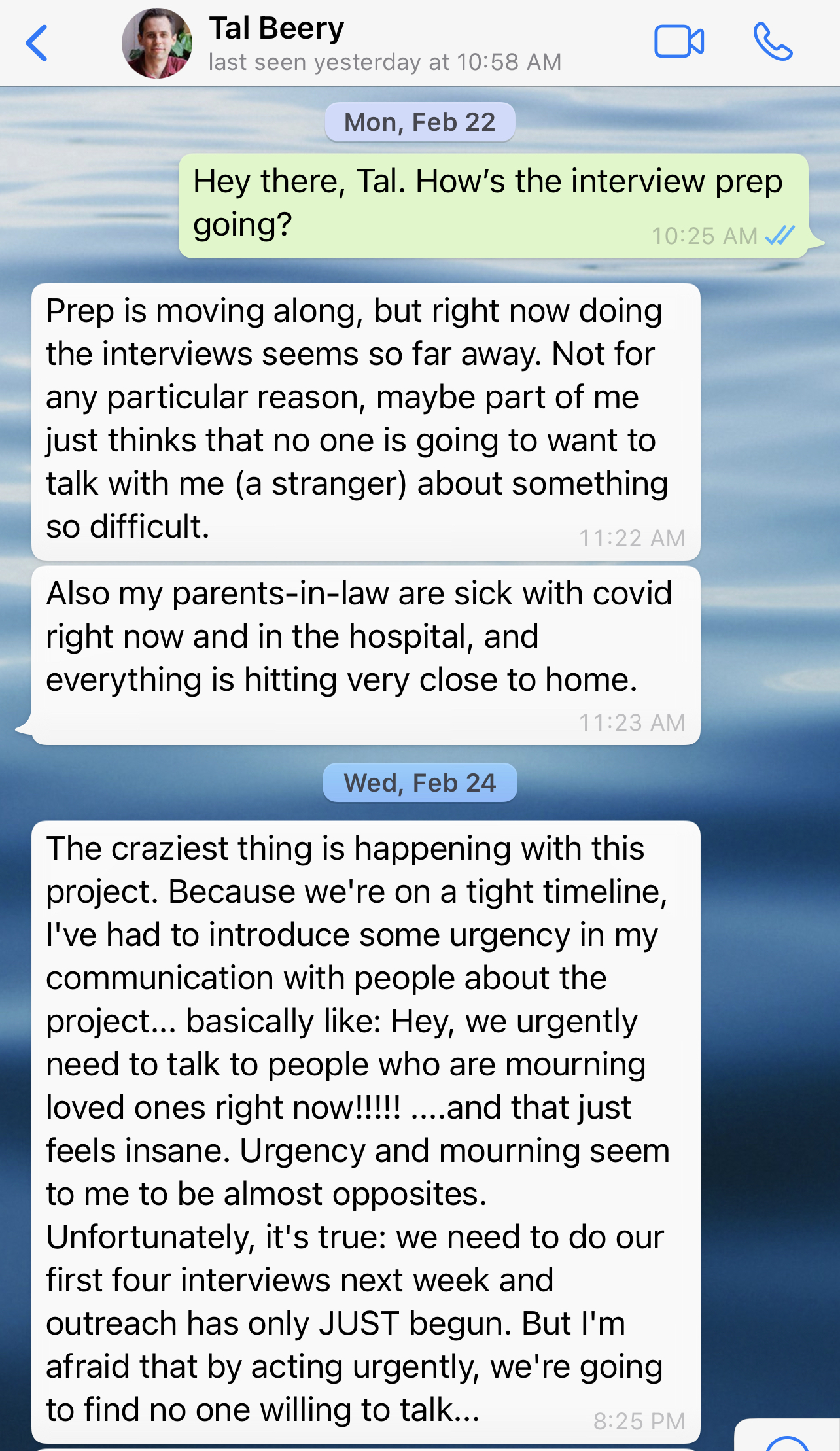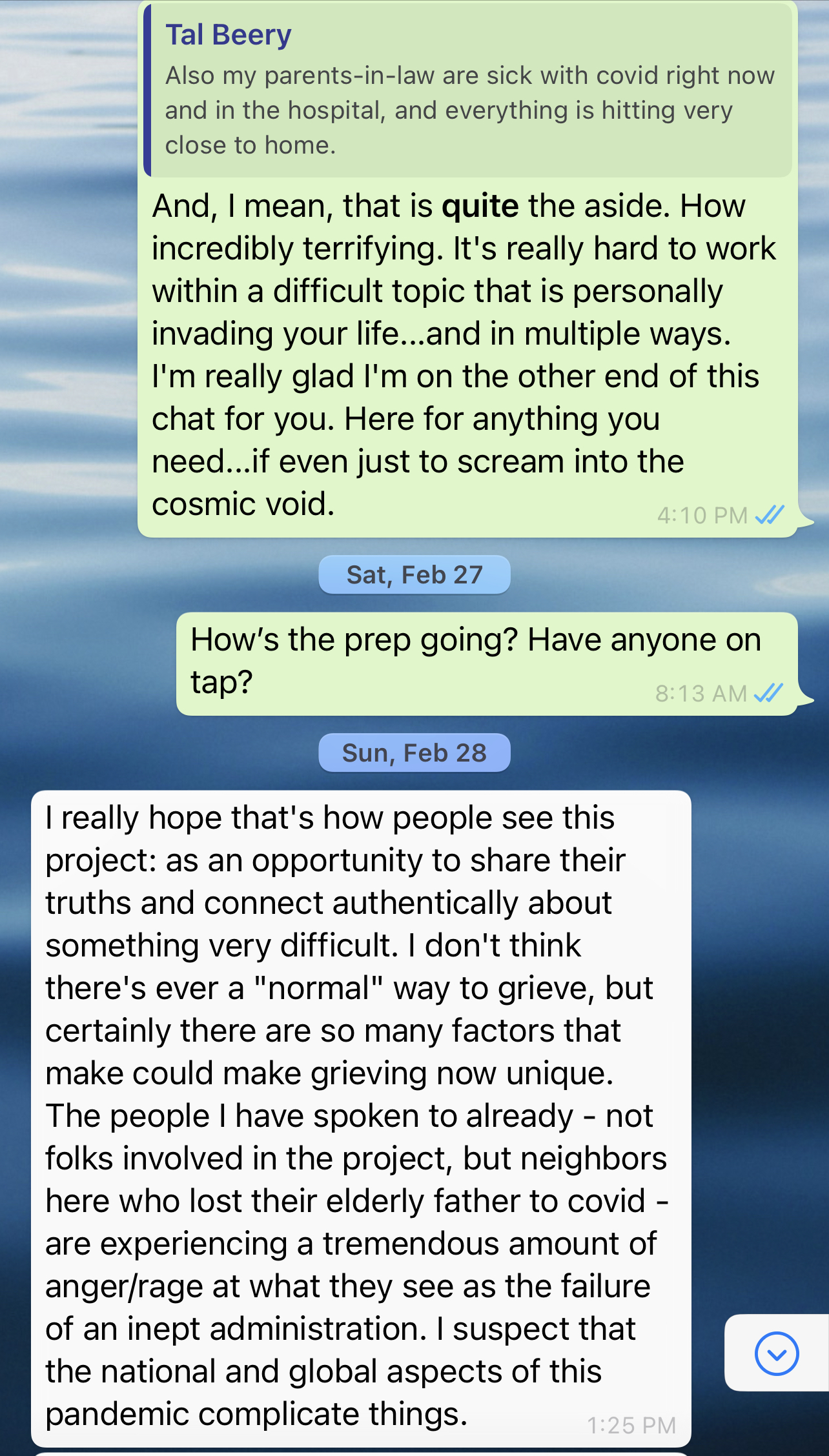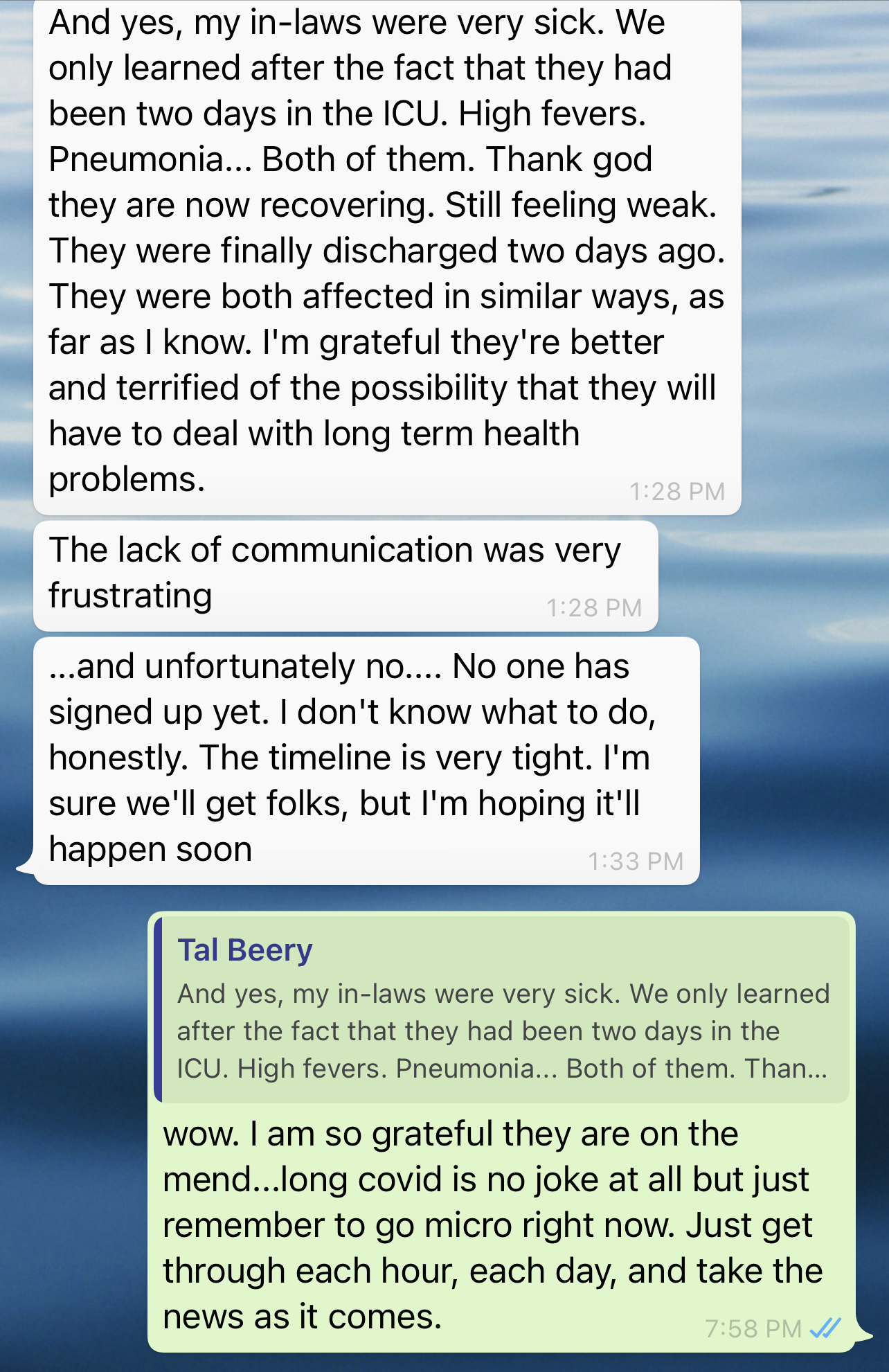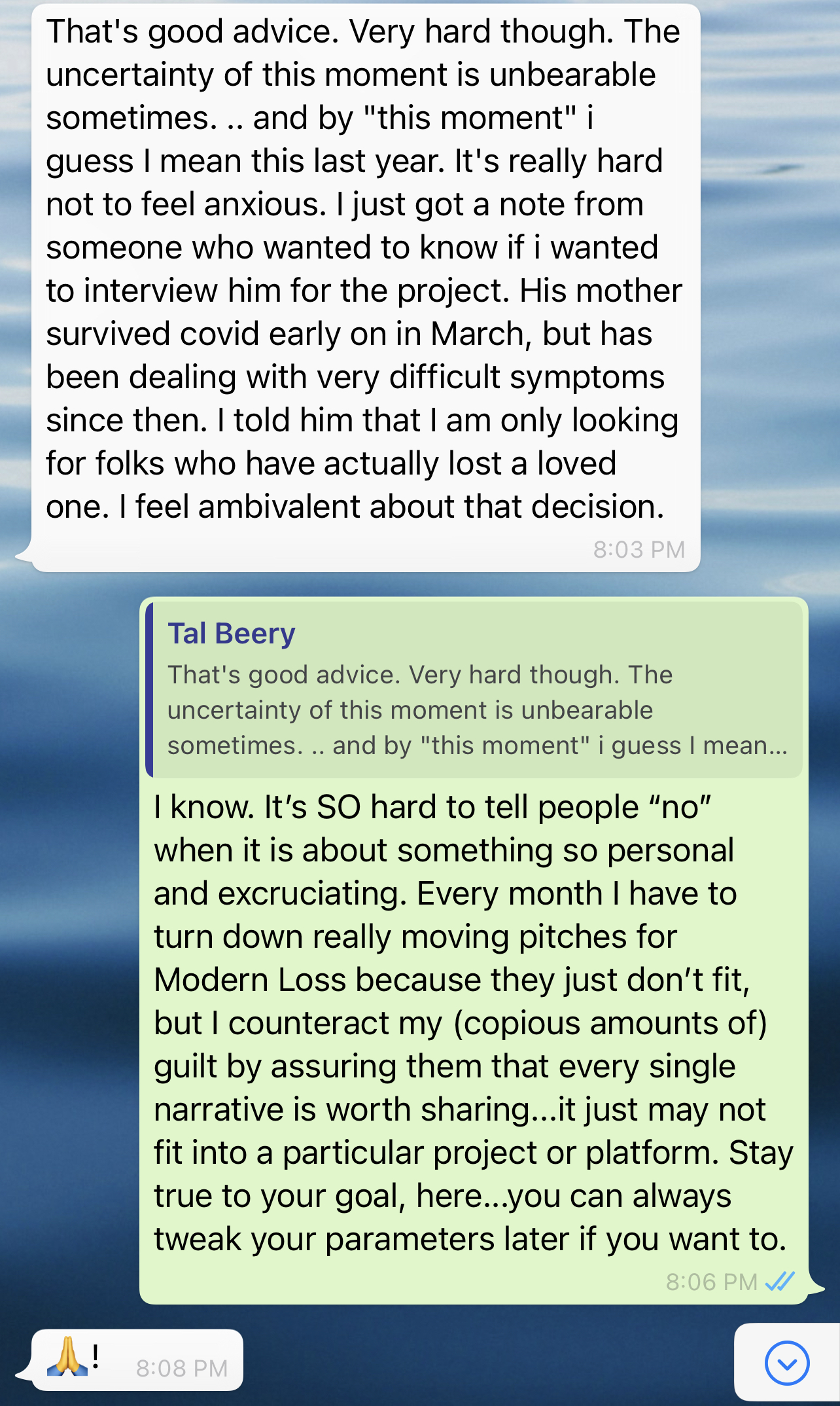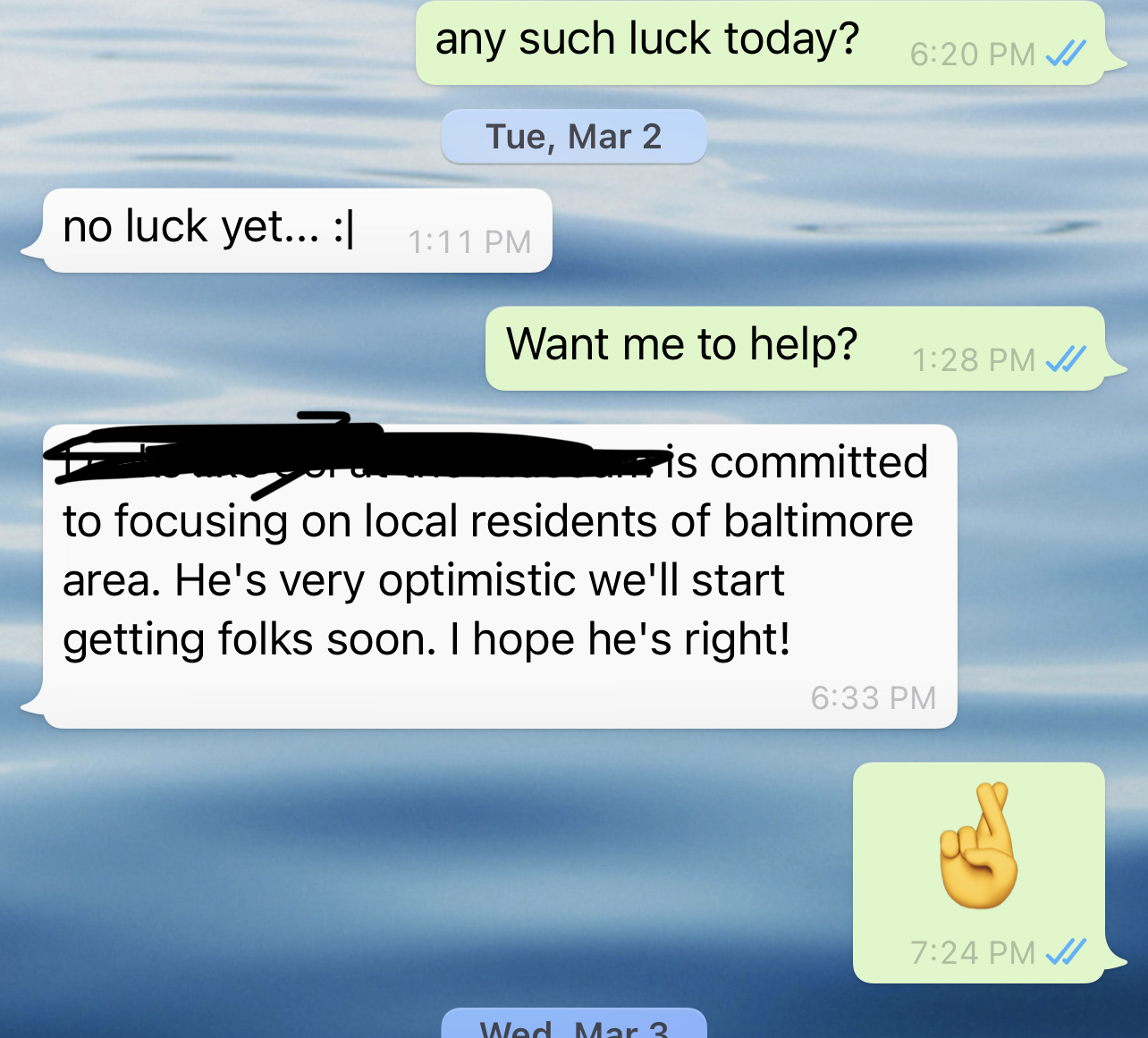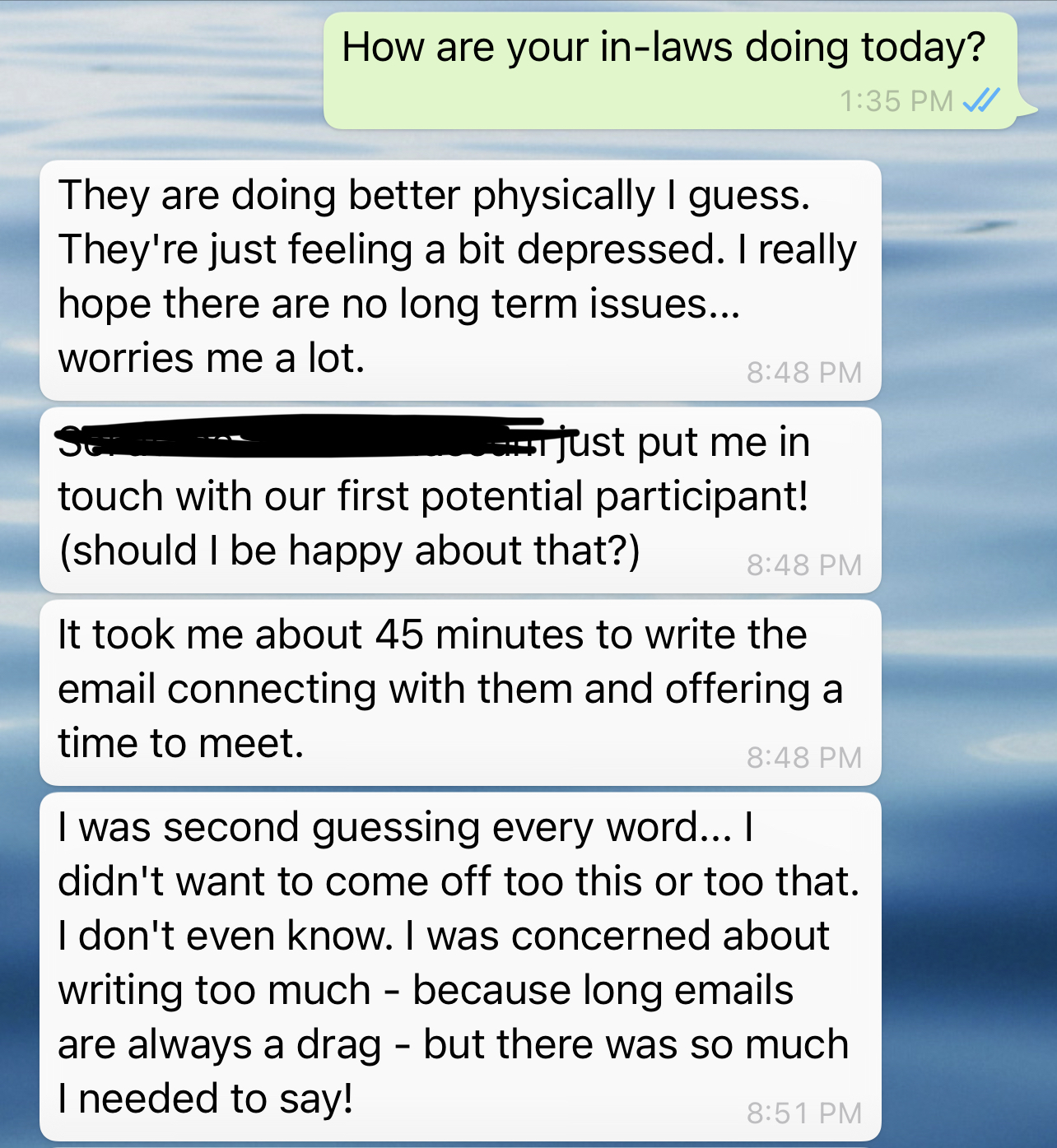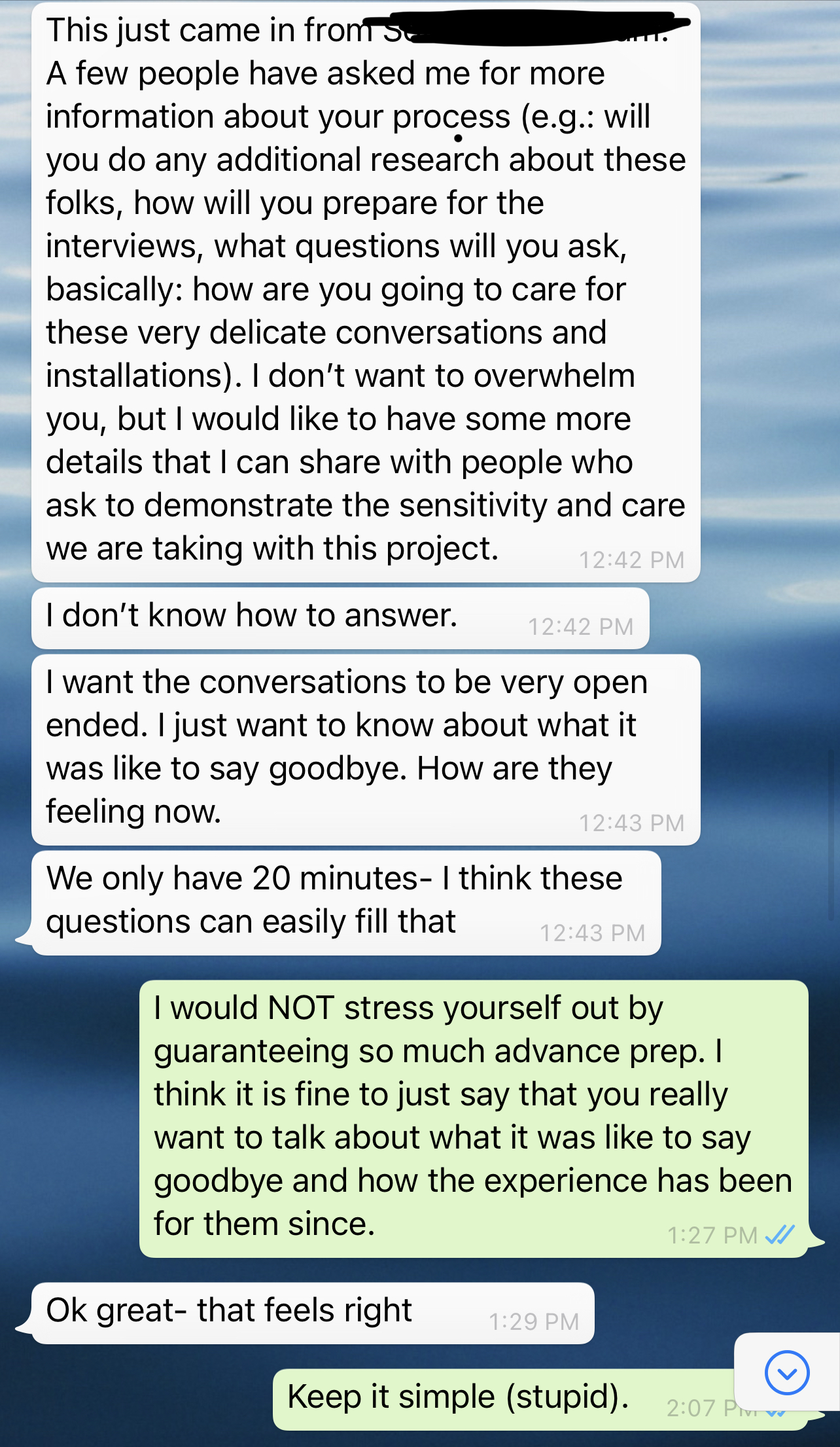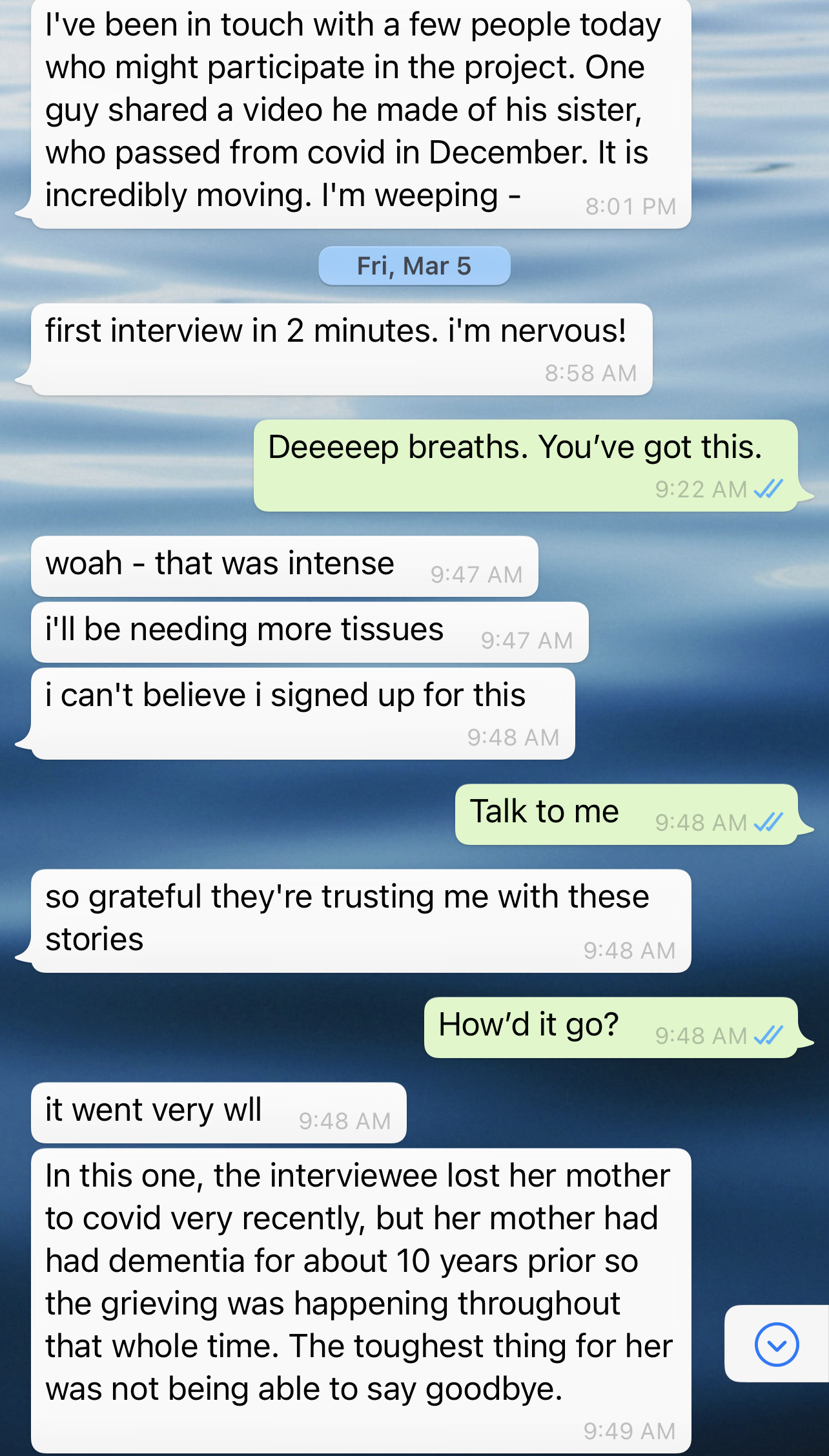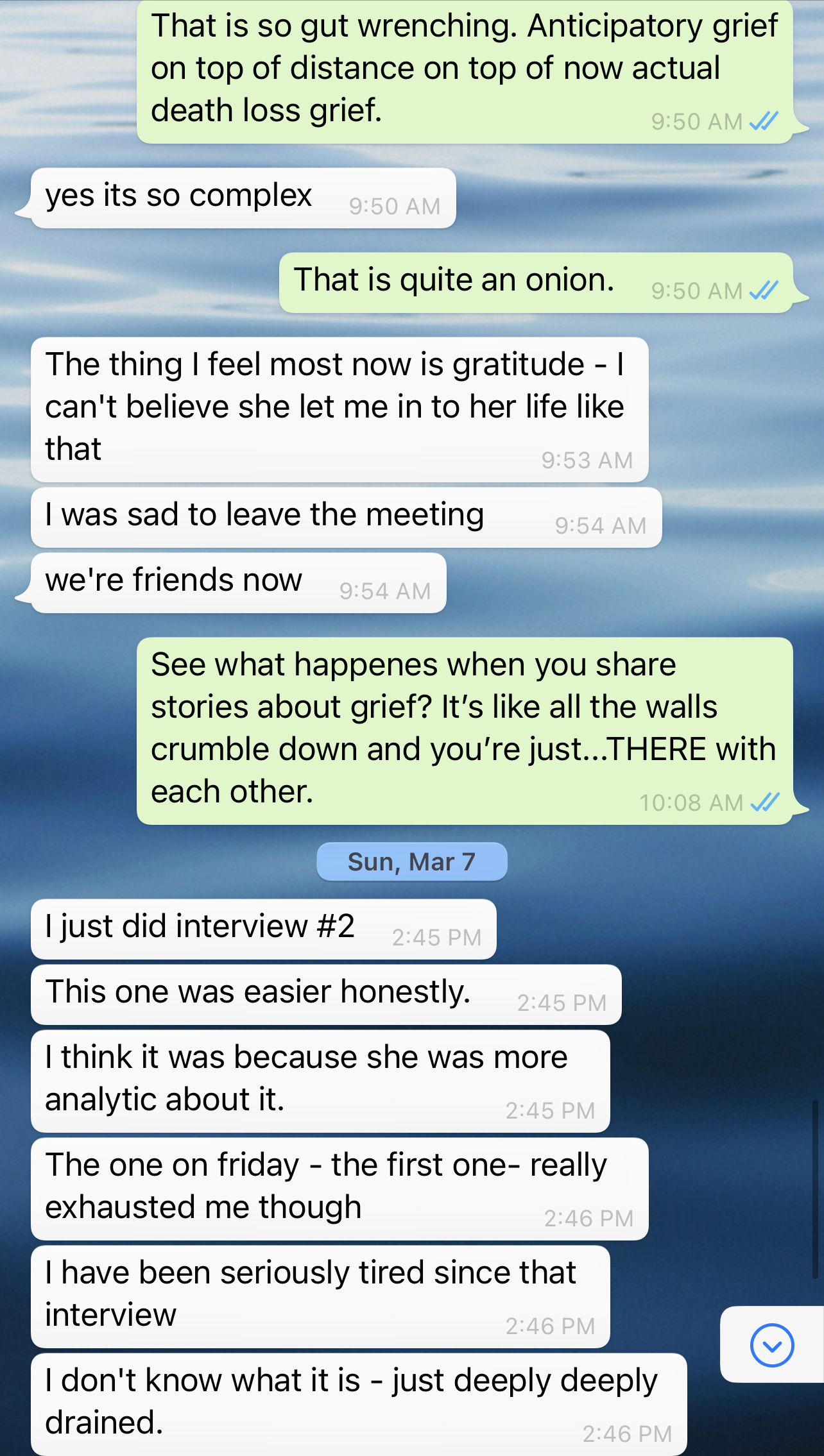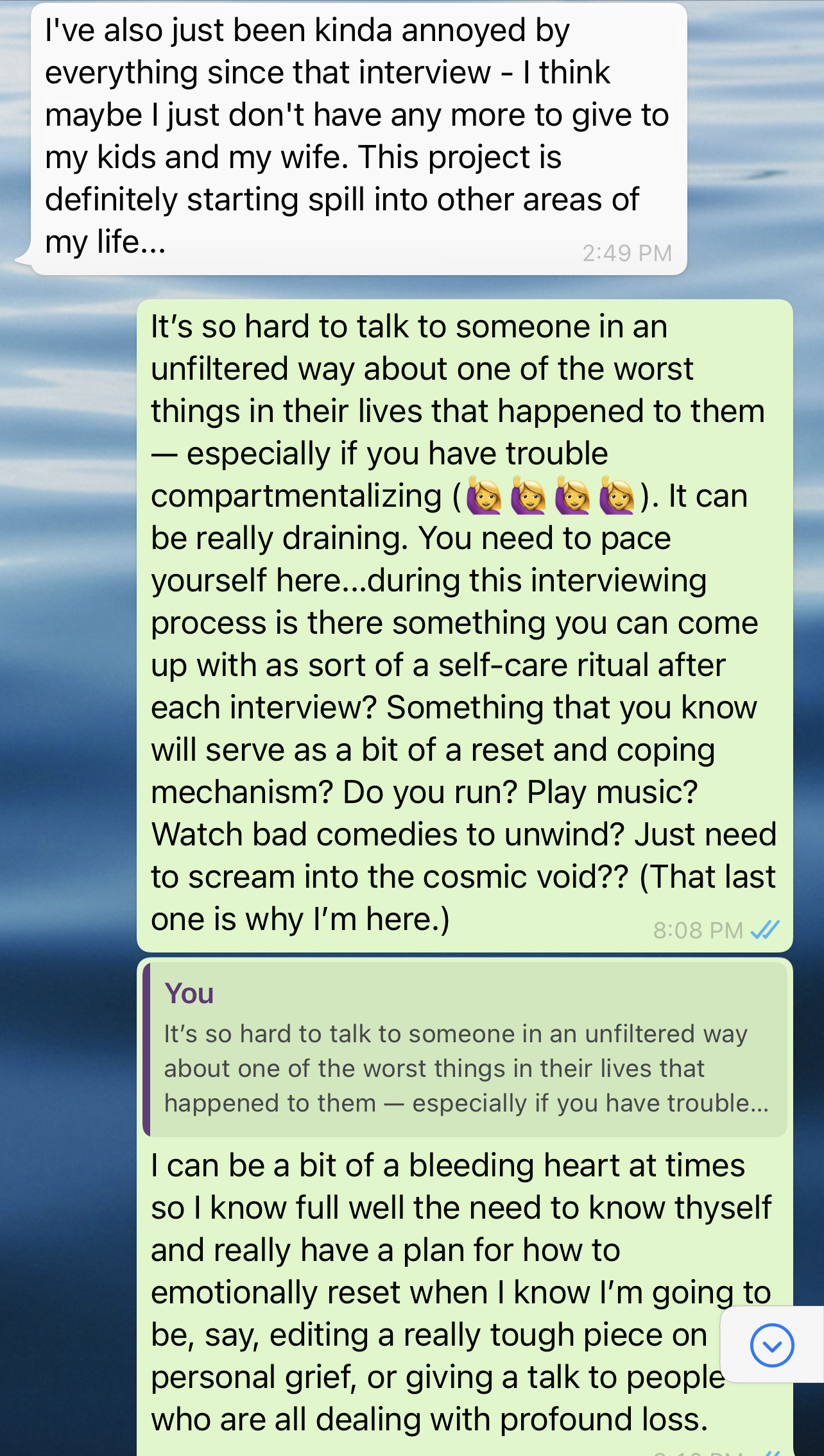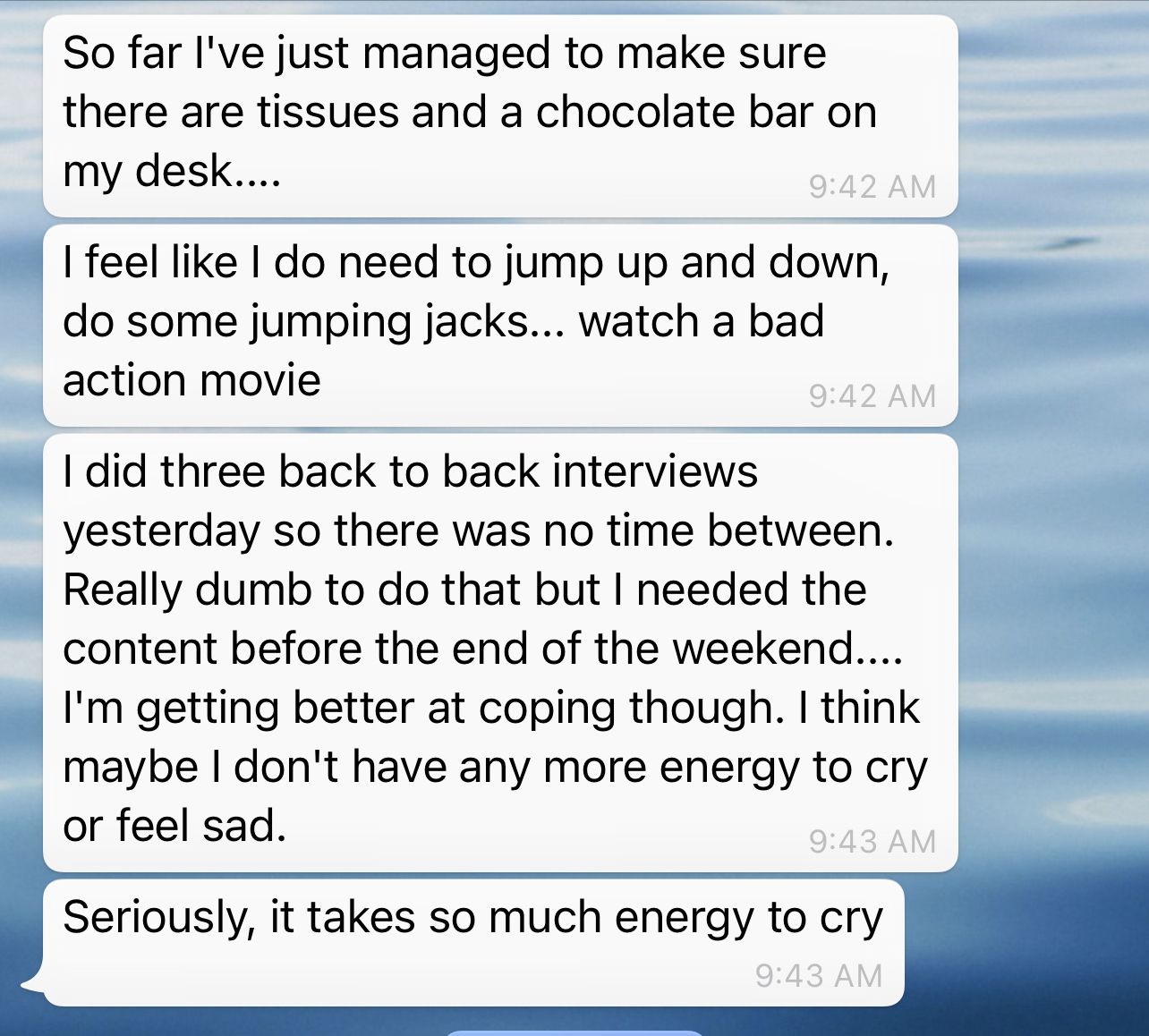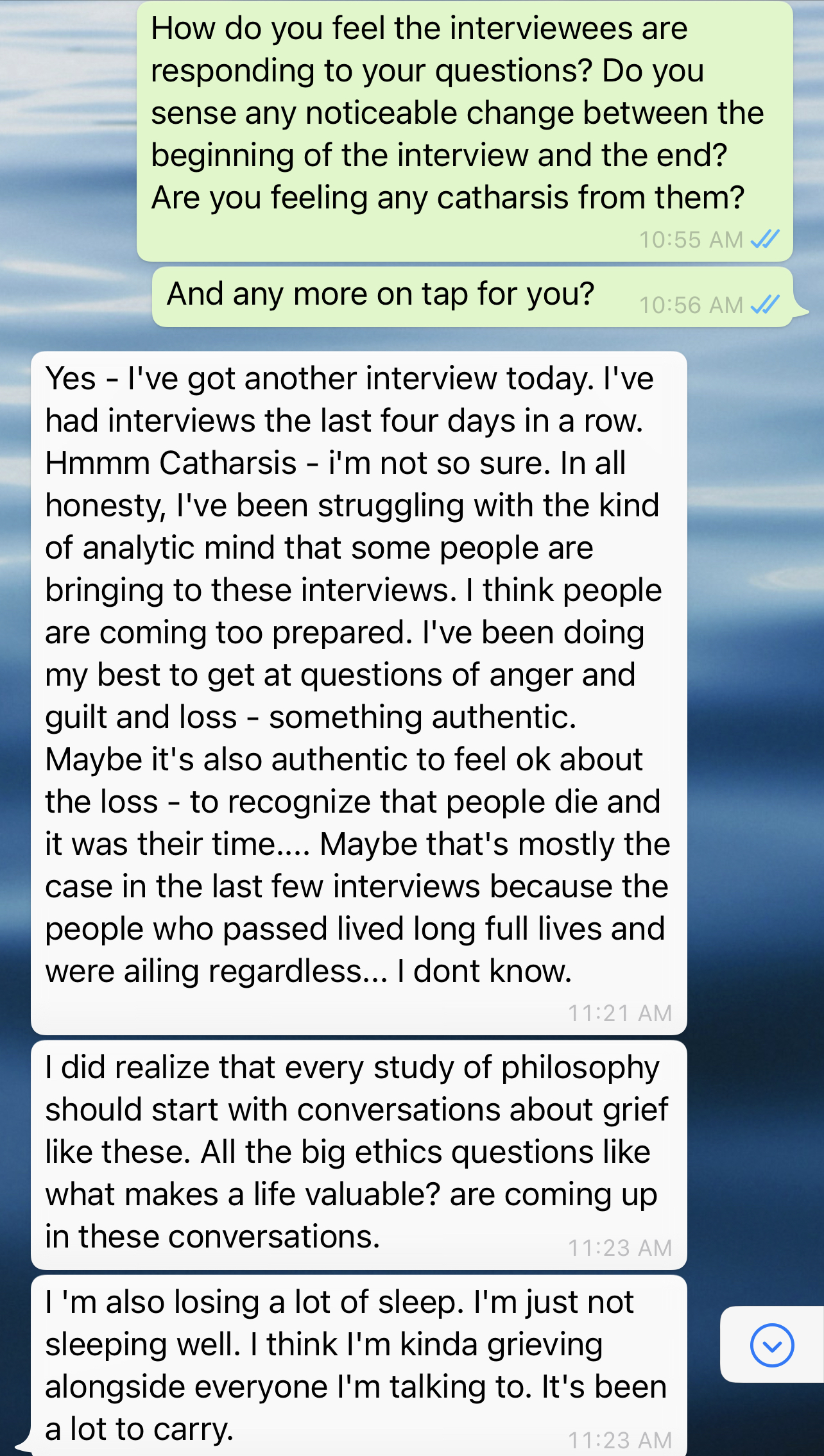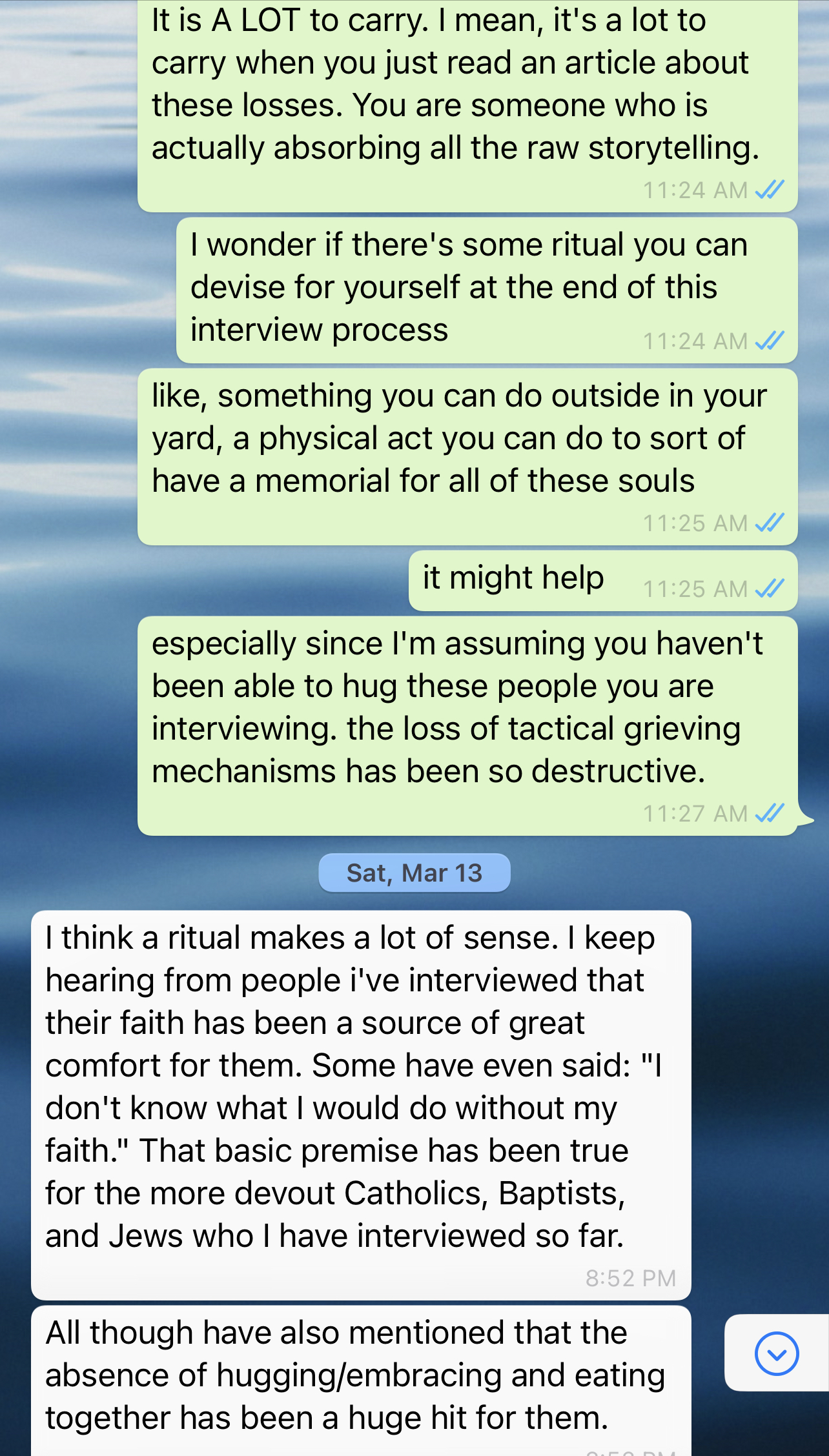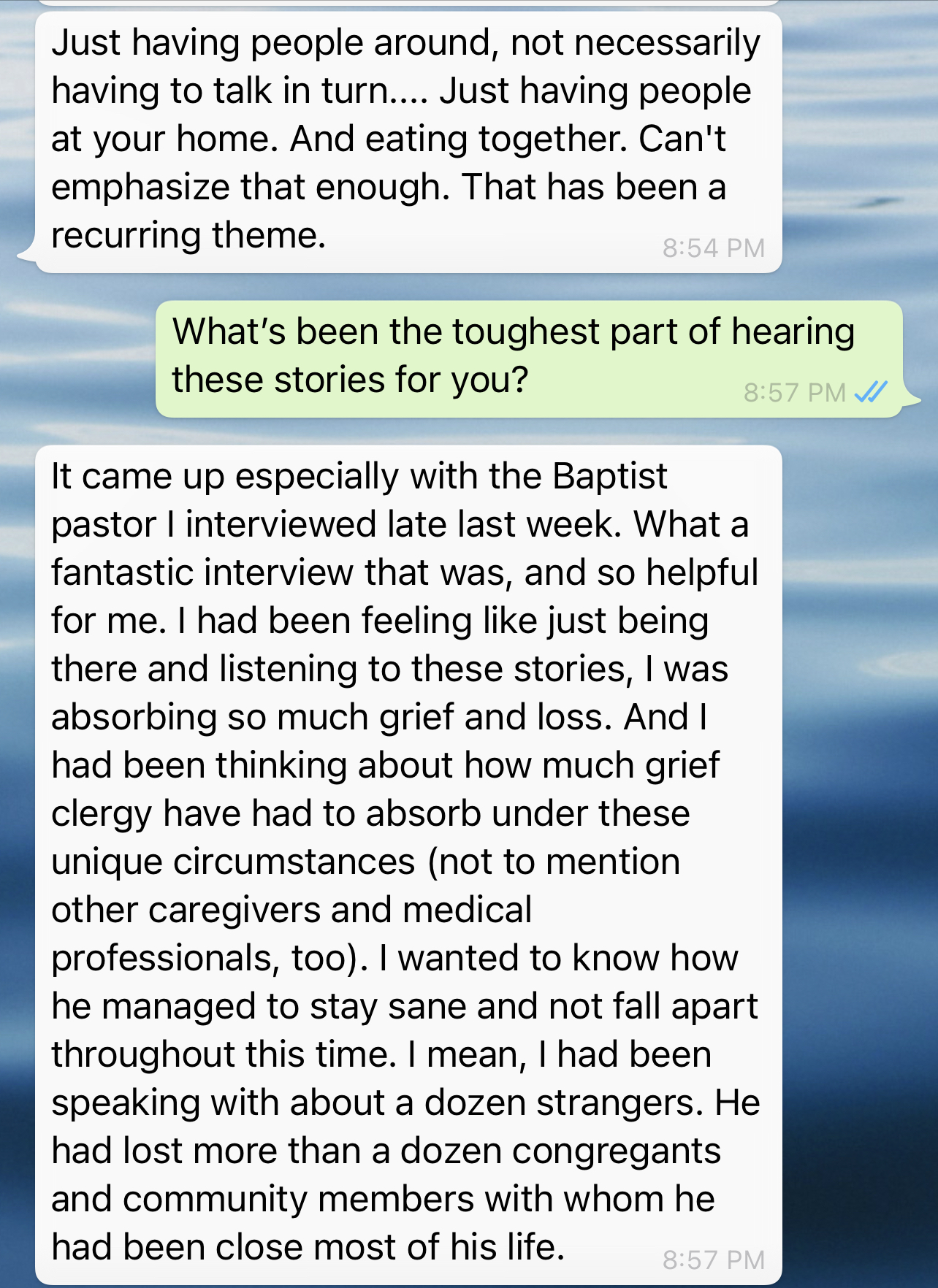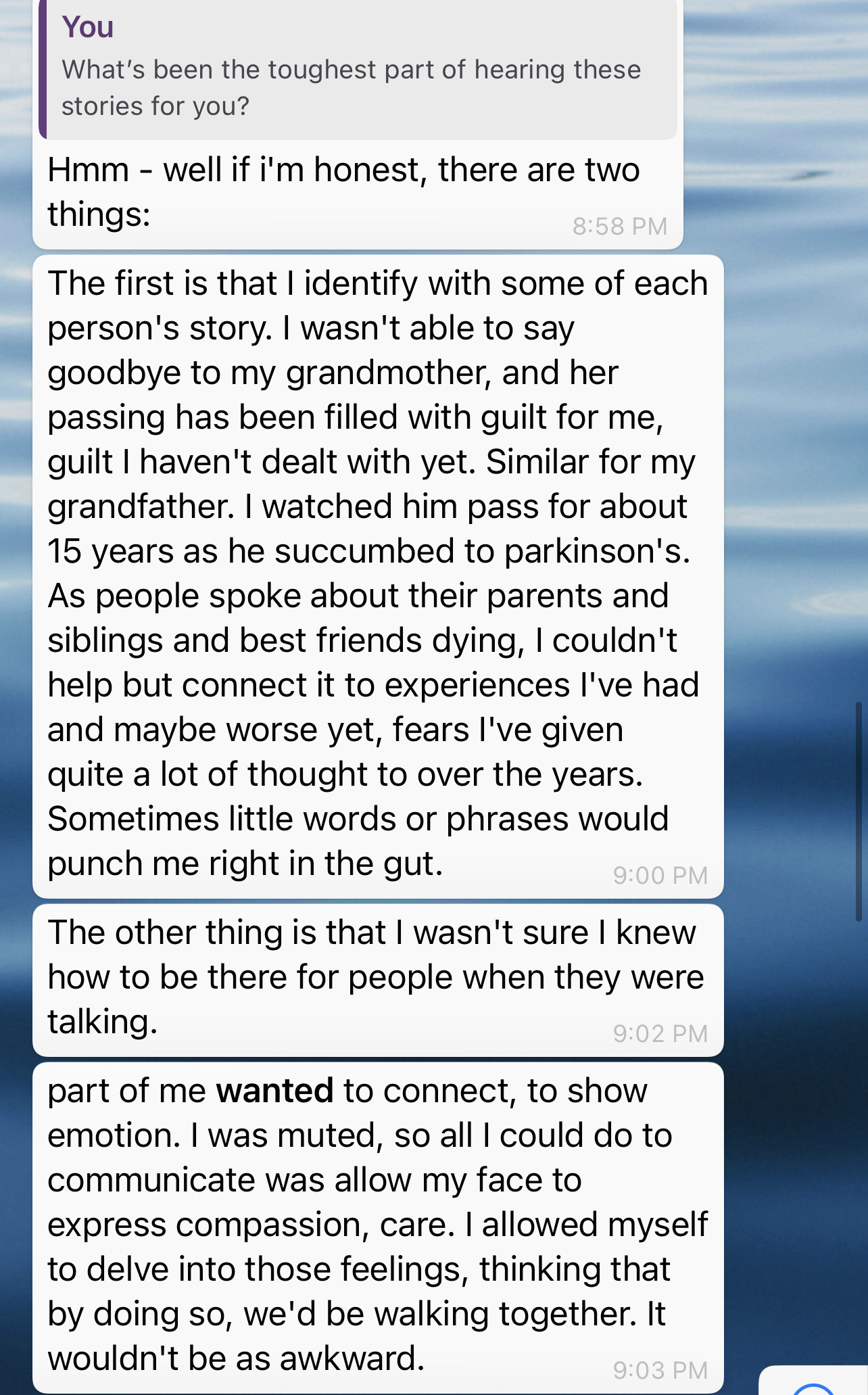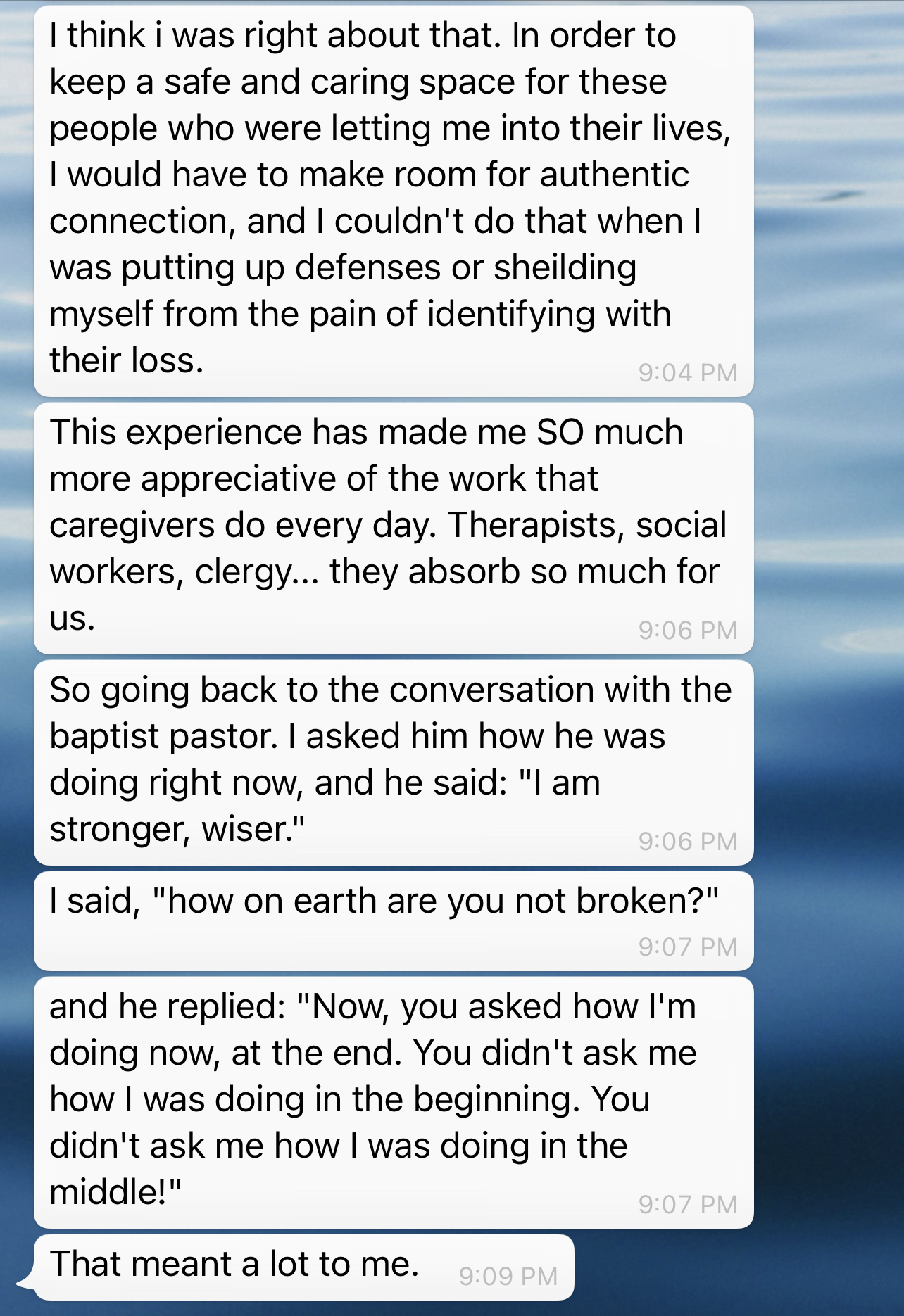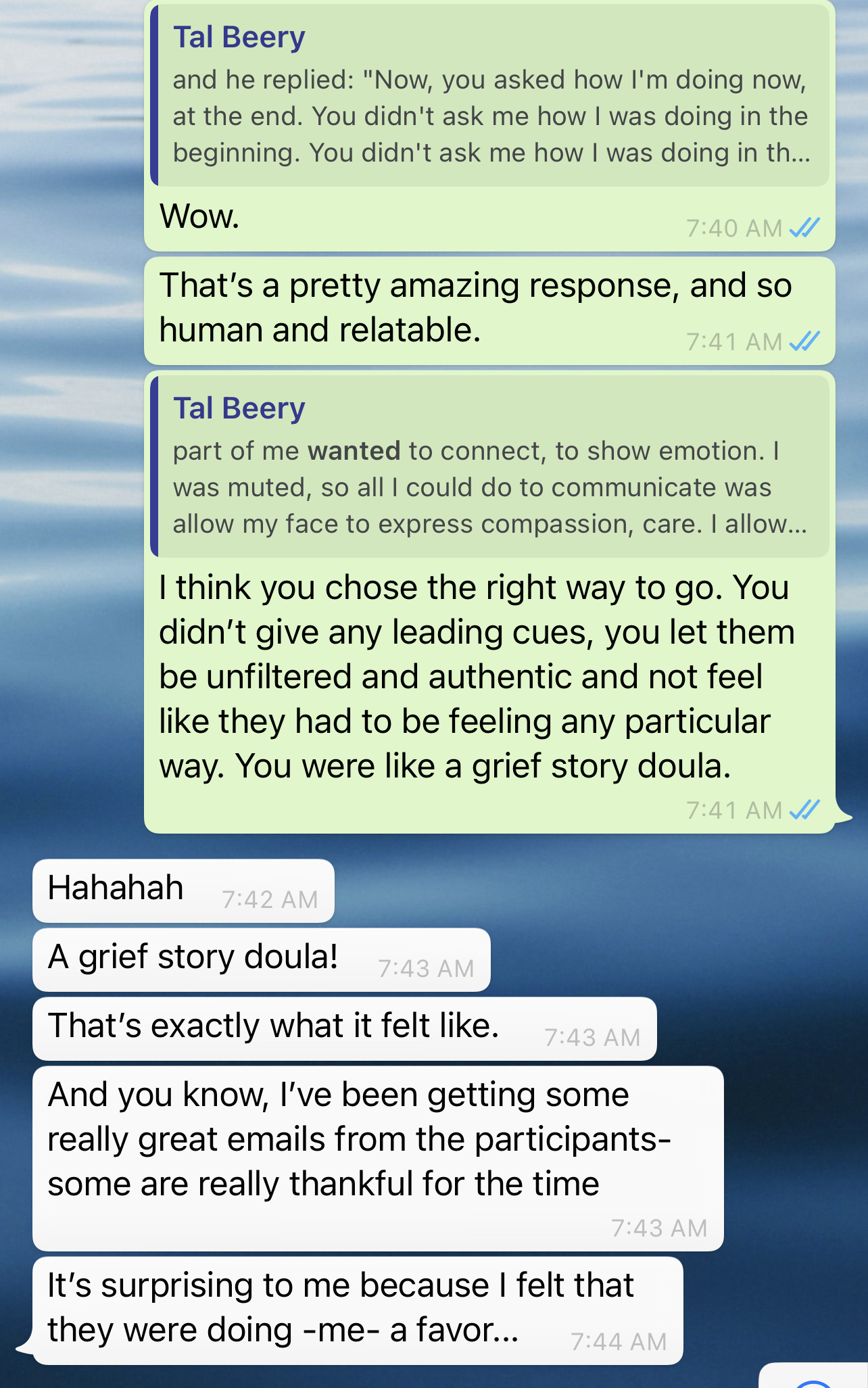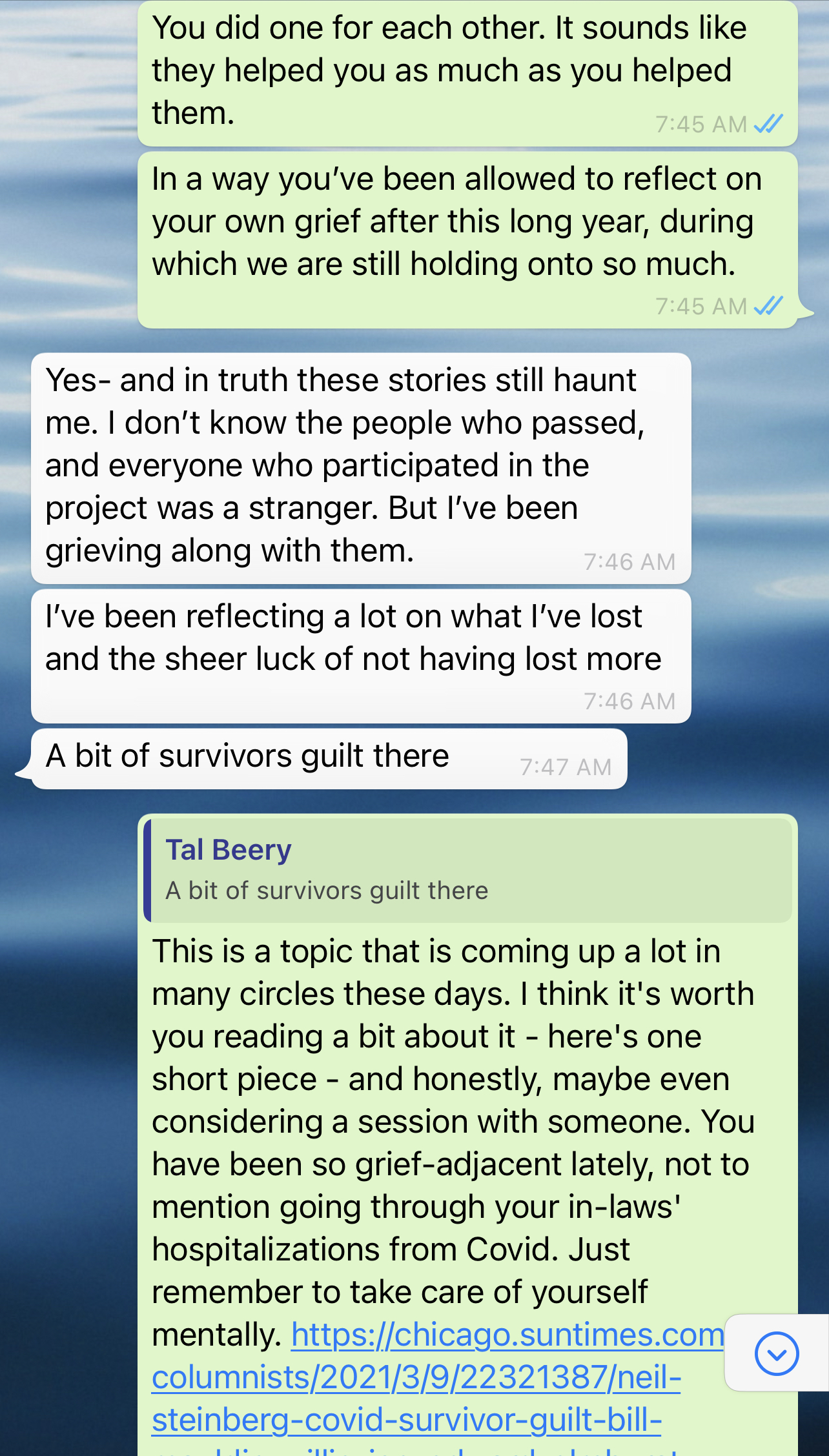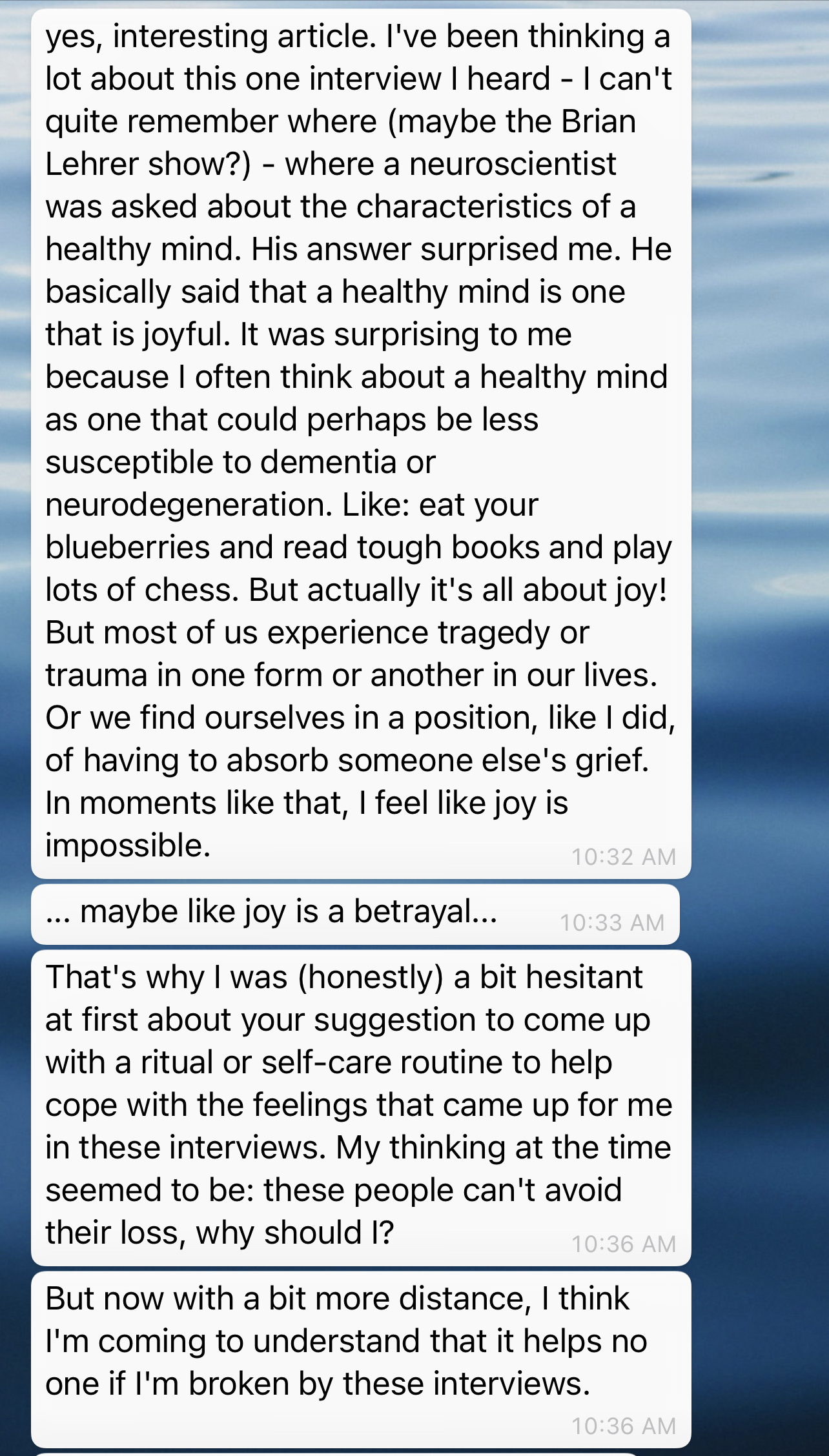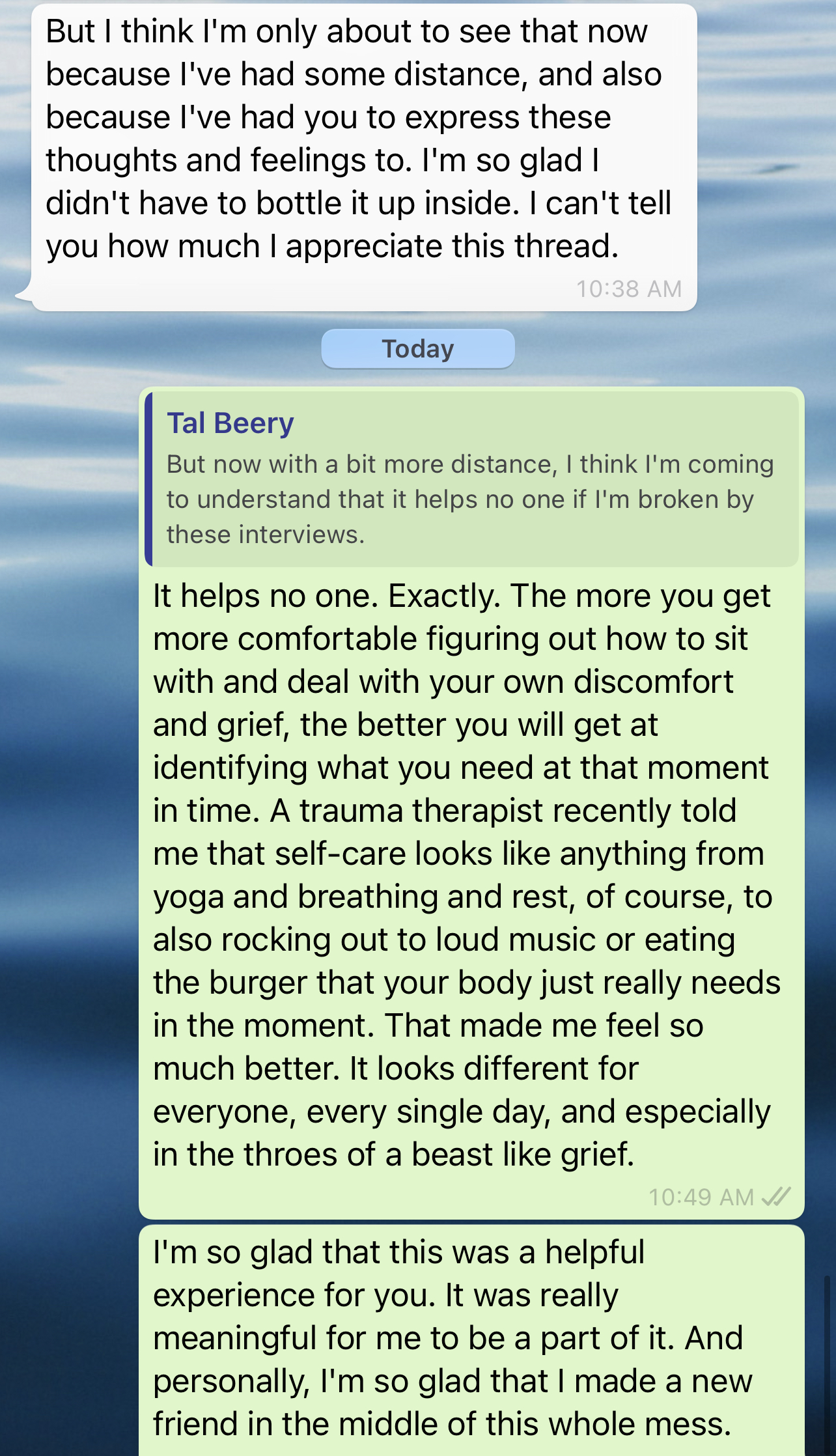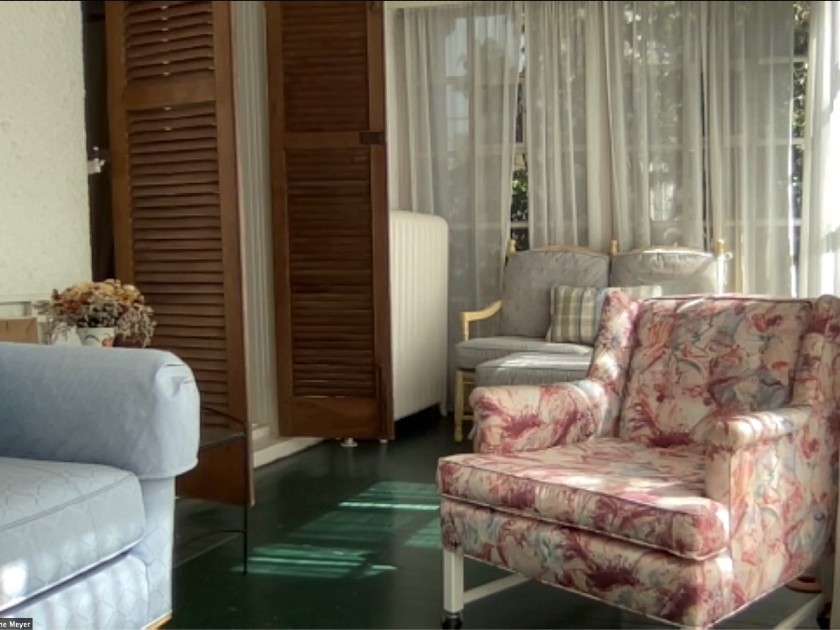
Zoom interview screen capture of JM.
We have been in relative isolation for a full calendar year. An entire year of pain, readjustment, fear, confusion, stress, trauma. A year of collective sorrow and loss: loss of employment, identity, childcare, education, dating opportunities, perceived control over our present day and also over our futures.
And, of course, a year of enormous loss of life. More than half a million souls have died in the United States alone, sparking a grief pandemic suffered by at least five million grievers from Covid-19 deaths alone (a theory called the bereavement multiplier suggests that for every death from this virus, an average of nine people are directly affected by long-lasting emotional, health and financial consequences). Then think about all the other millions of grievers mourning deaths from any other causes. Millions of people who have had to say their goodbyes through screens — if any were able to be said at all.
The isolation foisted upon grievers during the Covid-19 pandemic has held them prisoner in many ways. Go-to in-person mourning rites and rituals have nearly ground to a halt. Sitting in a room full of human comfort as mourners begin to navigate the deep well of personal grief has been stolen away. As devastating, also vanished are the ongoing invitations to share narratives during these formal and impromptu gatherings. Stories of life, memory, and, of course, final farewells.
Grief is best processed when it is acknowledged. Everyone has a story, and everyone deserves not only the chance — but also an earnest invitation — to share it. When we feel we have witnesses to our narratives, we often feel our emotional burdens are ever-so-slightly-lighter. Because they are divided up and carried by a community that cares and sees us.
Between March 5 and 12, 2021, artist Tal Beery interviewed eight people from the Baltimore area. Most of them are grieving Covid-19 deaths of loved ones, and all of them had to say goodbye or memorialize their loved ones under conditions of social distancing. They were diverse in age, gender, race, and religion. In total, more than 300 minutes of interviews were recorded.
These stories will be used for in the absence of a proper mourning, an outdoor installation and online space. Audio excerpts from interviews play on loop from speakers hidden at the base of two large 15-foot decorative arches on the facade of the Jewish Museum of Maryland in the historic Jonestown in Baltimore City. The arches themselves will frame large prints of Zoom background images gathered from the recordings. Thus, the arches, and the museum’s facade overall, will offer pixelated portals into the homes of grieving neighbors.
Those who listen to these stories will surely gain an enormous appreciation and empathy for the excruciating grief of these survivors. But now consider the fact that one person absorbed all 300 minutes of those stories. What about his experience?
When I view an installation, I’m often left wondering what the artist was really going through outside of what’s revealed on the little white description cards. What were the elements of the process that were the most meaningful and inspiring? What did they grapple with the most, need the most, doubt the most? And what was really going on for them personally?
So Tal and I did an experiment of our own: For weeks, we maintained a WhatsApp thread as he searched for interviewees, listened to their stories, and sifted through the recordings. Throughout, I tried to provide as much support, assurance, ideas, feedback, and really, sometimes, just a place for him to scream into the cosmic void. You can read part of our exchange below. When you do, it may serve as a reminder that one never knows what someone else is truly dealing with.
By inviting survivors of Covid-19 victims to share their stories from this unforgiving plague, Tal has stepped in as an integral, intimate witness during one-on-one interviews. By sharing those interviews through a larger installation, he is creating a community that sees and is impacted by these grievers and a site for collective morning and communal care. In that sense, this project has liberated them from the inability to lean on older support structures and created new ways for us to hold each other close. And I hope, that in some small part, our exchange helped Tal to feel a bit of care of his own.
–
This piece is a companion literary response to Tal Beery’s in the absence of a proper mourning, produced by LABA for Dwelling in a Time of Plagues.
It has been a terrible year for goodbyes: final FaceTime calls with loved ones in the hospital; no hugs at the graveside funeral; memorial services over Zoom. The mourning rituals we rely on for comfort and support as we grieve are not possible right now. The loss and isolation so many of us are feeling is immense. in the absence of a proper mourning is an outdoor installation and online space to gather testimonials from Maryland residents who have had to say goodbye or memorialize their loved ones under conditions of social distancing. Beery’s in the absence of a proper mourning asks us to confront numerous difficult questions related to our connections to one another and transforms the Jewish Museum of Maryland’s public-facing facade into a site for collective mourning and communal care. Learn more about this work here.
–
A Passover supplement including ten authors and ten artists responding to ten modern plagues can be downloaded here. Contributing authors include Sarah Blake, Marra B. Gad, Ayelet Gundar-Goshen, Letty Cottin Pogrebin, Rebecca Soffer, Rabbi Abby Stein, Darin Strauss, Michael Twitty, Rabbi Dr. Shmuly Yanklowitz, and Moriel Rothman-Zecher.
–
Dwelling in a Time of Plagues is a Jewish creative response to real-world plagues of our time. Collectively, the commissions in this constellation of art projects around North America grapple with contemporary crises: the global pandemic, institutional racism, xenophobia, ageism, forced isolation, and the climate crisis. Dwelling is generously supported by CANVAS.
Rebecca Soffer is the cofounder of Modern Loss, which offers creative and keeping-it-real content and community addressing the long arc of grief. She also co-authored Modern Loss: Candid Conversation About Grief Beginners Welcome, is a Columbia University Journalism School alumna and a former Colbert Report producer. Rebecca lives in New York City and the Berkshires with her husband and two young sons.
